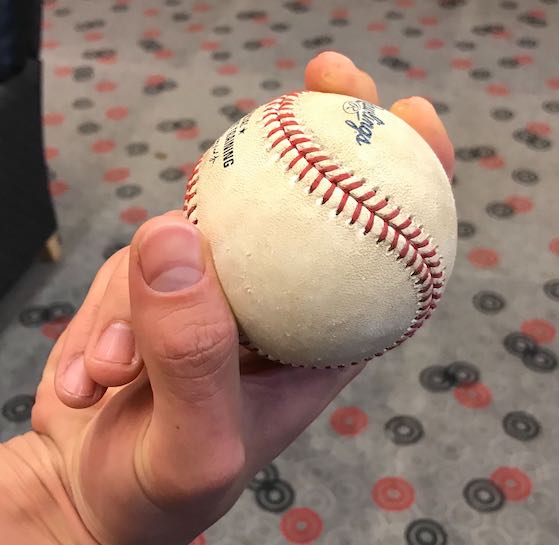Below is an analysis of the prospects in the farm system of the Kansas City Royals. Scouting reports are compiled with information provided by industry sources as well as my own observations. For more information on the 20-80 scouting scale by which all of our prospect content is governed, you can click here. For further explanation of the merits and drawbacks of Future Value, read this.
All of the numbered prospects here also appear on The Board, a resource the site offers featuring sortable scouting information for every organization. It can be found here.
Other Prospects of Note
Grouped by type and listed in order of preference within each category.
More Arm Strength
Andres Machado, RHP
Stephen Woods Jr., RHP
Conner Greene, RHP
Franco Terrero, RHP
Yunior Marte, RHP
Janser Lara, RHP
Anderson Paulino, RHP
Most of these pitchers are in their mid-20s and have premium velocity. Machado is 93-95, touching 97, with sink and an average slider. Stephen Woods was the team’s Rule 5 pick; his full report is here. Conner Greene was once a big time prospect and he still throws really hard, up to 98. Marte is 25, he’s 93-97, and has a really fast arm. He pitched well out of the Double- and Triple-A bullpens last year. Terrero, 24, is similar but has a longer arm action. Lara didn’t pitch in 2019 but was up to 99 the fall before and has a 2800 rpm breaking ball. Paulino is younger (just 21) and is up to 96, but needs a second pitch.
Burners
Michael Gigliotti, CF
Dairon Blanco, CF
Nick Heath, CF
Diego Hernandez, CF
Kevin Merrell, 2B
This is one of the few remaining orgs still obsessed with speed. Gigliotti has the best approach and contact skills of this group but he’s performed against competition much younger than him and has been hurt a lot. Blanco posted big exit velos last year (92 on average) but it was as a 26-year-old in Double-A. He’s a true 80 runner. So is Nick Heath, who might be the only minor leaguer who wouldn’t trade bodies with Luis Robert. Heath is a slash-and-dash hitter who might be a fifth outfielder. Diego Hernandez is more of a 55 runner but his instincts in center are very good, which is partly why KC pushed him to Burlington at age 19.
Bench/Depth Sorts
Erick Mejia, UTIL
Gerson Garabito, RHP
Scott Blewett, RHP
Sebastian Rivero, C
Freddy Fermin, C
Jimmy Govern, 3B
Emmanuel Rivera, 3B
Mejia is a 26th man type who can play all over the place. Garabito and Blewett are strike-throwing innings eaters with quality breaking balls; either could make spot starts. Rivero has a really athletic swing for a catcher but he has 40 power. Fermin is a really athletic catch-and-throw guy. Both project as third catchers on a 40-man. Govern was a small school college guy who raked against AZL pitching and then was listed as a catcher on the instructional league roster. Rivera has a plus bat but is positionless.
Sleepers
Austin Lambright, LHP
Rylan Kaufman, LHP
Rothaikeg Seijas, OF
Tyshaun Chapman, RHP
Lambright and Kaufman are lefties with relief potential. Lambright was up to 95 last year, while Kaufman barely pitched but looked great in during 2018 instructs. Seijas had the highest average exit velos among Royals DSL hitters but he has almost no body projection. Chapman is a small school arm with control problems, but he’ll touch 95 and has above-average breaking ball spin rates.
System Overview
This system has gotten much better over the last couple of seasons and almost all of it has been accomplished through shrewd drafting. A few of the lesser prospects were acquired from Oakland and Washington in deals for relief pitching, but mostly the org has been stockpiling solid college arms for the last couple of years.
This isn’t an org that others around baseball would mention as being among the most progressive of their rivals, and there’s evidence they’re both right and wrong about that impression. First, a surprisingly high number of these college pitchers have high breaking ball spin rates, which are typically coveted in the draft, especially among college arms whose pitch data is more frequently captured by tech. Why then have the Royals ended up with so many? Well, a lot of them have fastballs with sinker orientation that pair sub-optimally with big-arcing breakers.
Kansas City has also altered some players for the better after acquiring them. Jackson Kowar, Ismael Aquino, and Noah Murdock all had their breaking balls altered after the Royals got a hold of them, and the org seems particularly adept at killing spin on changeups, though they may also just target pitchers who throw splitters more often than most teams.
Finally, they let their starting pitching prospects throw a lot of innings. Kansas City had 14 minor league pitchers throw at least 120 innings last year, tied for the most in baseball with Seattle. There are a handful of orgs who had about 10 pitchers carry workloads that heavy in the minors, but typically teams only have four to seven arms who do so.

